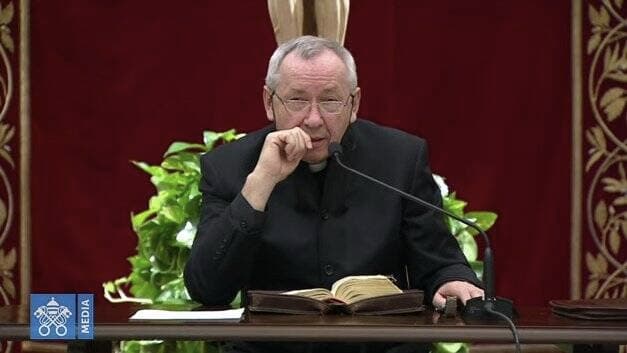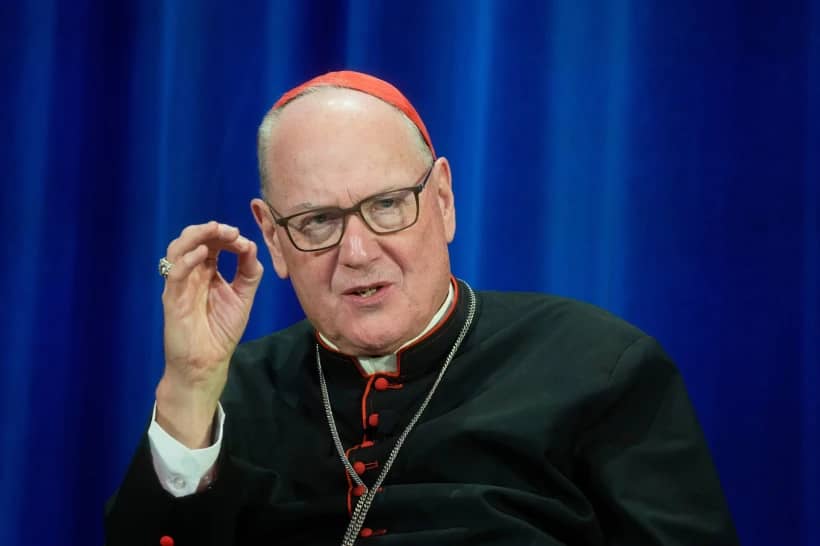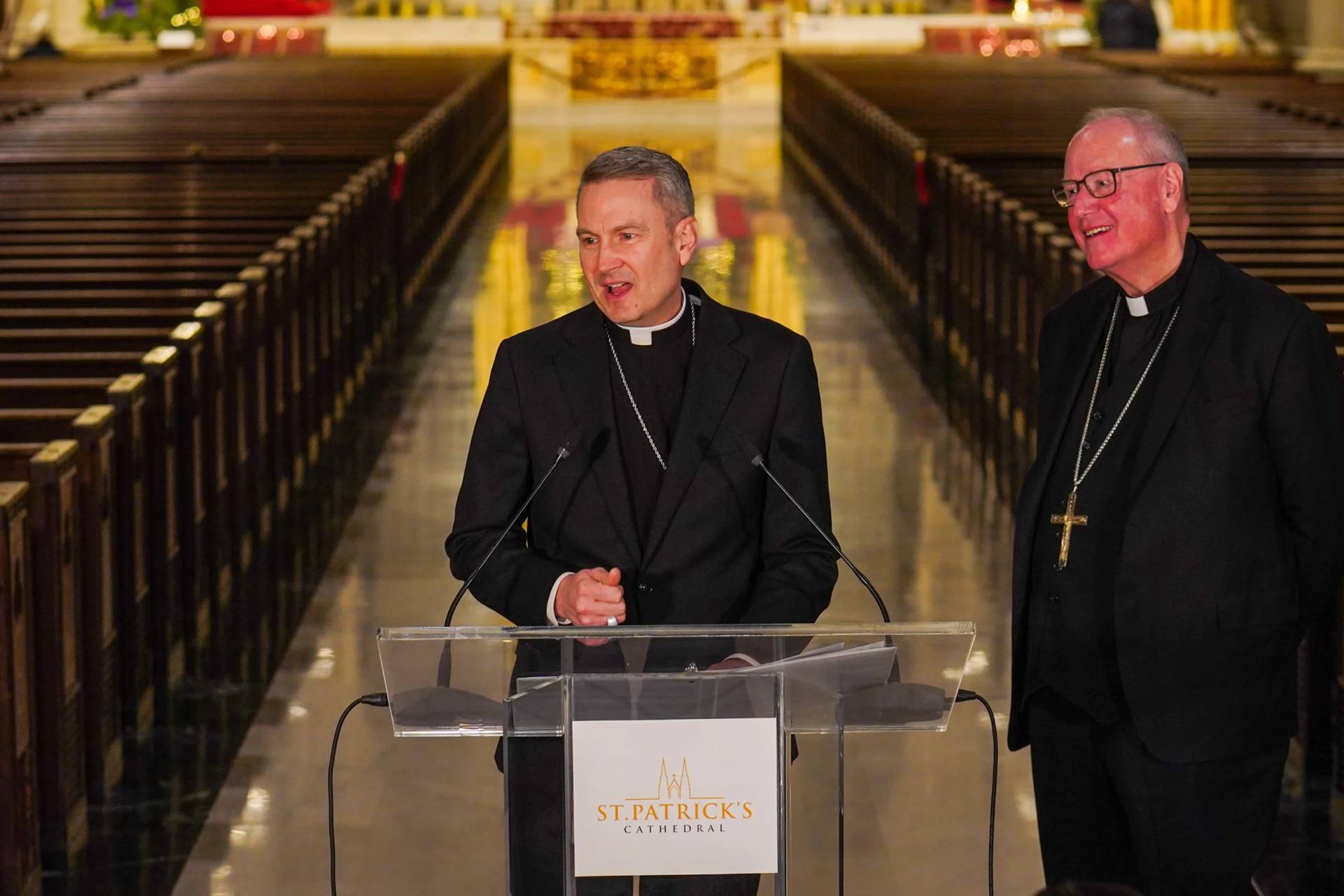FAIRFIELD, Connecticut – As the Catholic leader responsible for a world-famous and much beloved Marian healing shrine in France continues to seek consensus over the removal of artwork by an accused serial abuser, two Catholic institutions in the U.S. state of Connecticut are among the scores of Church organizations faced with the question: What to do with the art produced by Father Marko Rupnik and his Centro Aletti art studio in Rome?
Rupnik is accused of psychologically, spiritually, and sexually abusing dozens of victims—most of them women religious—over some thirty years, many of which he spent in Rome at the Centro Aletti art institute he founded with the blessing of Pope St. John Paul II in the early 1990s.
Shrines and chapels and other sacred spaces from Lourdes to Springfield Lakes, Australia—and more than two hundred other places in between, including the Apostolic Palace in the Vatican—have over the past thirty years availed themselves of Rupnik’s services for sometimes massive mosaic installations, often at great expense.
Removing or otherwise covering the works could be very expensive, as well. The question also raises potentially thorny problems of responsibility, canonical and civil jurisdiction, and a host of other related issues.
From Lourdes to Connecticut
Bishop Jean-Marc Micas of Tarbes and Lourdes issued a press release on Tuesday announcing immediate measures to reduce the visibility of Rupnik mosaics that adorn the façade of the shrine of Our Lady of Lourdes. Micas said his preference is for their eventual removal, but he is working to build consensus before proceeding.
In an exclusive interview with La Croix International, Micas explained the mosaics had been installed in a manner allowing for their removal without destruction.
RELATED: Rupnik art dispute more nuanced than it seems, historian says
“My deep, formed, intimate conviction is that they will one day need to be removed,” Micas told La Croix International, “they prevent Lourdes from reaching all the people for whom the sanctuary’s message is intended.” Nevertheless, Micas said he has decided “not to remove them immediately, given the passions and violence the subject incites.”
The Holy Spirit Chapel at Sacred Heart University in Fairfield, Connecticut, and SHU’s Nativity Chapel both have Rupnik-studio mosaics, as does the Holy Family Chapel at the Knights of Columbus headquarters in New Haven, Connecticut.
SHU and the Knights of Columbus
“We were very surprised and disappointed when we first learned of Rupnik’s inappropriate and exploitive behavior,” Sacred Heart University in Fairfield, Connecticut, told Crux. “Leadership from around the University,” SHU said, “have had ongoing discussions about the mosaics.”
“They are works of faith,” SHU said, “and we consider them as such.”
SHU did not say whether University leaders had reached a final decision regarding the mosaics’ fate.
The handling of Rupnik’s case by Vatican authorities and Rupnik’s former Jesuit superiors has come under close scrutiny and has been the subject of intense criticism ever since the allegations against Rupnik came before the public more than a year and a half ago.
The Society of Jesus expelled Rupnik for “disobedience” last year, after the Vatican decided there was a case to answer but declined to prosecute, citing the statute of limitations on the crimes alleged. When the diocese of Koper in Rupnik’s native Slovenia agreed to take him on as a priest in good standing, there was a global outcry.
Pope Francis, in the wake of the global indignation and unusual pressure from within his own inner circle, ordered a review of Rupnik’s case.
That was eight months ago.
“The mosaics in our chapel were created in 2009 by many artists from [the] Centro Aletti where Marko Rupnik was the director,” the SHU statement explains.
Most of the Rupnik works that adorn Catholic places of worship around the world were produced and installed years and even decades before allegations against the priest came to light, though a few have gone up even after the gruesome allegations of serial spiritual, psychological, physical and sexual abuse began to emerge in December 2022.
Several of Rupnik’s presumed victims say his art was central to his abusive modus operandi, making his artwork especially ill-suited to the adornment of sacred space.
A letter sent recently by Laura Sgrò, the attorney for five of Rupnik’s most outspoken victim-accusers, to Ordinaries and rectors of shrines and chapels at which Rupnik studio art is installed, alleges Rupnik abused at least one of his victims on the scaffolding set up to install a mosaic.
“These facts occurred in a church,” the letter says of the alleged abuse on the scaffold, “in a consecrated place.”
“Other sisters have recounted how they served as models for the works of Father Rupnik,” the letter says, “these also displayed in sacred spaces, and while they posed they were abused.”
“This letter,” Sgrò wrote, “does not constitute a judgment on the works of Father Rupnik, but only a reflection on the opportunity of their presence in consecrated places, dedicated to Our Lord.”
The SHU statement also said the works of Rupnik and his Centro Aletti “can be found around the globe, including the Knights of Columbus chapel In New Haven, the Vatican and the St. John Paul II National Shrine in Washington, D.C.”
The Knights of Columbus have their headquarters in New Haven, where there are Rupnik works in the Knights’ Holy Family Chapel, as well. The Knights told Crux they have a review underway but declined to offer details.
“We have determined not to discuss the details of our review process until it concludes,” the Knights said.
Earlier this year, the Washington, DC chapter of the Knights of Columbus called for the removal of Rupnik works from the KofC-sponsored St. John Paul II Shrine in the U.S. capital.
RELATED: Lourdes bishop faces resistance on removal of Rupnik art
“We are deeply disturbed by and strongly condemn all instances of sexual abuse, which are completely antithetical to the life, legacy, and teachings of St. John Paul II,” the Knights said in regard to the St. John Paul II Shrine. “We continue to pray for victims and are carefully considering the best course of action concerning the mosaics that were installed at the shrine.”
The Knights also said they “are aware of recent reports that the Dicastery for the Doctrine of the Faith’s investigation is at an advanced stage,” calling that news “an important factor” in their considerations.
The Roman Question
Monsignor John Kennedy, who heads the disciplinary section of the Dicastery for the Doctrine of the Faith responsible for the review of the Rupnik matter, recently called Rupnik’s “a delicate case.”
“[W]e started well, and we are really continuing step after step, keeping all aspects in mind, because there is the aspect of the allegations against him, there is the aspect of the victims, there is the aspect of the impact on the Church,” Kennedy said, “so it’s delicate.”
The letter from Sgrò said the request on behalf of her clients “must not be transmuted into a hasty judgment (It. giudizio anticipato) of the facts attributed by my clients to Father Rupnik.”
“Regardless of any proceedings underway against the author, and in fact independent of the proceedings’ outcome,” Sgrò wrote, “what is asked is that reasons of good sense prevail in not using these mosaics in ecclesial settings, without respect of their artistic value, which—it is certain—is not under discussion here.”
“Said works,” Sgrò wrote, “cannot remain where they have been placed, both for respect of victims and for the [sacred] character of the places of prayer,” in which they have been installed. “This does not mean they should not find adequate space elsewhere,” Sgrò also wrote, “[someplace as] does not cast a shadow over the spirituality of the faithful.”
Sgrò told Crux the letter went to “bishops, nunciatures, religious,” who have in their “home” a work of Rupnik. “We sent the letter to all the addresses we found regarding the over two hundred twenty works by Rupnik placed in sacred places,” Sgrò said.
It was unclear whether either Bishop Frank Caggiano of Bridgeport or Archbishop Christopher Coyne of Hartford were in receipt of the letter.
Officials in the Diocese of Bridgeport, within which SHU is located, did not respond to Crux’s repeated requests for information regarding the role of the diocese in decision-making.
Coyne of Hartford, which has ecclesiastical jurisdiction over New Haven, only came into his see very recently. Coyne was in Rome to receive his pallium — the particular sign of a metropolitan archbishop’s office — at a ceremony on Friday, the Solemnity of Saints Peter and Paul.














